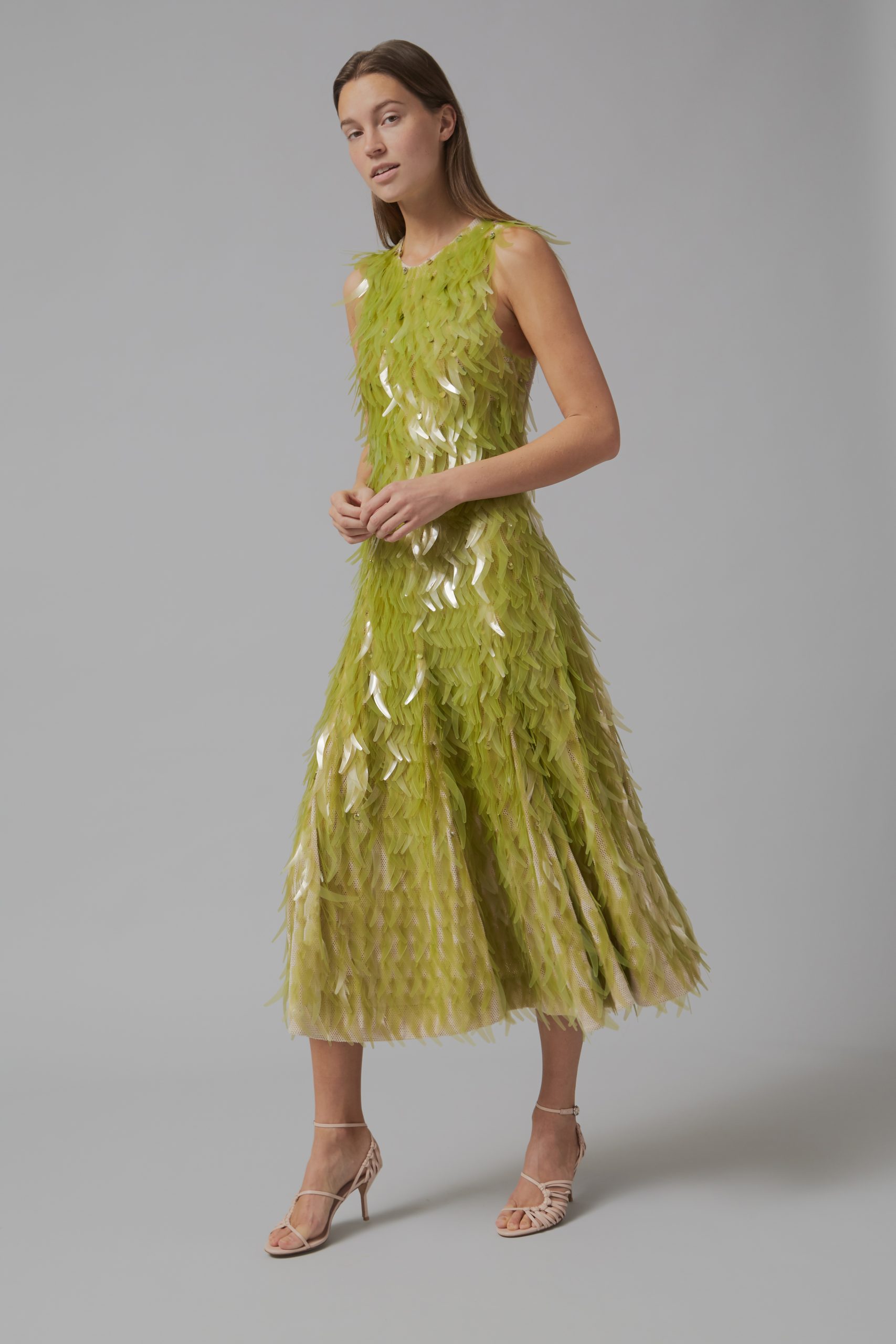These words all too easily puzzle together to build a tea-stained image of Victorian women, sat idly, stitching deftly. These dexterous crafts have been quickly stereotyped through film and novel, and become cemented in the antiquated idyll of the domestic woman (and all the limiting conditions that surround her!). Whilst this raw craftsmanship has been somewhat buried in pastimes, with a new era of textiles and machine-led production replacing seamstresses, its aesthetics and style haven’t been forgotten. Rather, the fashion industry has recently seen a resurgence in this more homely and natural style, as shoppers look back at images of the past to perpetuate the ever-cyclical structure that is fashion.
This category of garment, in the semantic field of wool and thread, and presumed to be made by hand, has perhaps become more fashionable as shoppers begin to prioritise quality. These products seem to emanate a certain sense of rusticity, and are often commercially presumed to be homespun with love and care, and thus surely sustainable….. During the recent lockdowns in particular, as young people have looked to lonesome methods of entertainment, or embracing new hobbies, these antiquated skills have had a resurgence in popularity. Like baking and home workouts, needle-led art became a comforting pastime for our anxiety ridden world during the pandemic.
However, this aesthetic, being rooted in small and careful production, is certainly a figment of our minds, and a result of the conventional images from fiction. In regard to crochet, whilst these kitschy intricate pieces becoming trendy has been great for independent designers and investment in small business, the aesthetic has also been stolen and imitated by fast fashion giants. Real crochet categorically cannot be made on a machine. Crochet is a time-consuming skill that takes years to perfect and pursue. Thus, any crochet bought from big brands must be a fake replica mimicked by a machine, or, more worryingly, handmade by outsourced workers who will be significantly underpaid for their time. There is a shocking discrepancy in the idea that a crocheted top, that would take 20+ hours to make, could be sold for £15. The renaissance of embroidery and crochet has definitely cultivated an aesthetic that is being abused by big brands.
However, phony counterfeits aside, these trends are also rooted in a highly feminised aesthetic. Handmade textile work has historically been a very gendered textiles practice. With a backstory rooted in misogynistic gender ideals, where competence in the likes of embroidery was thought to reinforce suitability for marriage, the aesthetic certainly doesn’t conjure the most avant-garde image. Although just a style, and a strain of fashion, these sorts of textiles have therefore historically been unable to project the same offbeat and progressive themes as garments made from more modern methods and materials. But this trope of crocheted and embroidered pieces is definitely changing. Threaded art is forging a name for itself quite distant from your grandmother’s doilies.
There are many visual examples of how this fashion aesthetic today is changing and developing to be something entirely different – something cool. Embroidery is being adopted by innovative and upcoming designers to quite literally stitch modern meaning and narrative into their work.
Take Danielle Clough, the South African embroidery artist who is stitching on everything from wallpaper to tennis rackets, with bright obnoxious colours, weaving images of popular culture from Biggie Small to Liquorice to All Sorts. Her work is bold, showy, and far-flung from any tea-stained image of woman’s work in the 1800s.
Or James Merry, the fashion artist who has worked with Björk, Gucci, and Tilda Swindon. His needle work, which has culminated in a joint collection with 66 North, has helped to reinvent embroidery and align its aesthetics with a more hype beast and temporal fashion culture. The embroidered clothing range, marketed underneath a trendy outerwear brand inspired by the great Icelandic landscape, couldn’t be a more dissident image from that which we usually intertwine embroidery with.
Or Emma Mckee, aka The Stitch Gawd, who has managed to market her handcrafted pieces alongside the music industry. Her Instagram, bio pinpoints her as “The Chicago Cross Stitch Artist Who’se Friends With All Your Favourite Rappers”.
Or any of the millennial makers on Depop and Instagram, selling handmade crochet garments with a new tone. Crochet has found a new footing; it has even developed a certain kind of sexy modishness, or even a flair of punk.
In this way, embroidery and crochet is most definitely being reinstated as something cool, and as an art form to track as it develops alongside our ever-oscillating fashion trends. On the one hand, this resurgence of interest in the handmade, might be playing its role in the wider development of a wave of femininity and romanticism we can see creeping back onto the runways. On the other hand, as this article has advertised quite adamantly, handmade garments are not exclusive to this realm of aesthetics, and are in fact, due to their readiness to be customised, more frequently being adopted as an innovative medium onto which to project new-found expressions of styling and creating.
by Hebe Street from GLITCH Magazine





